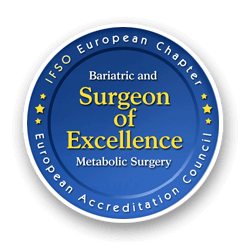
Other interventions
Injuries
Injuries
“As we are informed about developments in medicine, we try to follow a balanced lifestyle, with a careful diet and exercise.”
“As we are informed about developments in medicine, we try to follow a balanced lifestyle, with a careful diet and exercise.”
We take care of ourselves as much as we can.
We limit drinking and smoking and anything else that could endanger our health.
But what about the unpredictable? A serious injury, for example, from a car accident or an accident in the house.
Can we avoid it?
And if so, are doctors ready to help us?
There are no warnings for injuries and it is difficult to predict them.
This fact, both in the past and present and in the future, makes the need for early and effective treatment even more urgent.
The numbers are scary:
Deaths from injuries worldwide in 2000 are estimated to have been in excess of five million!
The number of people being injured is clearly higher, if we take into account all the kinds of physical trauma, and the disabilities, which are equally important, due to the sometimes life-long morbidities which they may entail.
The prevention effort:
Successful injury prevention efforts in developed countries have yielded positive results, even if injury remains a leading cause of death in people less than 45 years of age.
In Greece, until today, treatment for injury has been and remains uneven in many emergency departments.
The establishment of organized Injuries Centres is long overdue.
In the long run, the treatment of injuries puts a heavy burden on the public healthcare system.
Abdominoplasty
Abdominoplasty
Before considering abdominoplasty, it is essential that those who have undergone procedures for morbid obesity give themselves time before they proceed to their desired abdominoplasty. This is so that they lose all the pounds of excess weight which they had before their surgery for morbid obesity.
This period should NOT be less than 18 months.
Obesity surgery puts the body under catabolic stress, and this can last 12-18 months.
Even if the weight of the formerly obese person is stabilized before 18 months have passed after the initial operation, the body will CONTINUE to lose fat, and the weight of the fat is immediately replaced by a corresponding amount of body mass.
This means that if the patient tries to undergo any plastic-aesthetic restoration by removing the excess skin or use of implants or other endoprostheses, before 18 months have passed, they run the danger of a failed aesthetic result because the skin may continue to loosen or sag.
Abdominoplasty is the most common type of abdominal skin rejuvenation surgery, with the removal of the excess skin, restoration of the dimensions of the white line, any possible hernias, and the repositioning of the navel.
It is a demanding operation on formerly obese patients, compared to that applied to people who merely want “aesthetic perfection”, without there being any real evidence of former obesity, and whose reasons are solely to satisfy a personal desire.
The reason why it is a demanding operation is that formerly obese people, and especially those characterized by abdominal obesity, after losing excess weight, have quite a large “hang” of skin in their abdominal area, which can often burden them with functional problems including urination.
Specialized surgery requires the surgeon’s knowledge and performance of additional, either simpler or more complex, elective or urgent surgeries.
Many of the simple surgeries that could be performed on their own are usually surgeries which can be performed at the same time as other more complex ones, such as upper gastrointestinal surgery.
For example, a laparoscopic cholecystectomy or a laparoscopic adhesiolysis may well be carried out at the same time as a major morbid obesity operation, such as biliopancreatic diversion.
Here indicatively are some procedures that can be performed safely and with experience.
Special mention is made of abdominal surgery in patients who have previously undergone surgery for morbid obesity.
Laparoscopic Cholecystectomy
Laparoscopic Cholecystectomy
Cholecystectomy, which is the surgical removal of the gallbladder, is now considered a routine operation.
The most common indication is the presence of gallstones that cause symptoms such as pain, indigestion, and even inflammation of the gallbladder, a condition which is called cholecystitis.
Specialized surgery requires the knowledge and performance of additional simpler or more complex elective or urgent surgeries.
Many of these relatively simple surgeries, that can be performed on their own, are usually surgeries which can be performed at the same time as other more complex ones, such as upper gastrointestinal surgery.
For example, a laparoscopic cholecystectomy or a laparoscopic adhesiolysis may well be carried out at the same time as a major morbid obesity operation, such as biliopancreatic diversion.
Here, indicatively, are some interventions that can be performed safely and with experience.
Special mention is made of abdominal surgery in patients who have previously undergone surgery for morbid obesity.
Laparoscopic Small
Intestine Procedures
Laparoscopic Small Intestine Procedures
The small intestine is the part of the intestinal tract between the duodenum and the large intestine.
It may be divided into 2 parts: the jejunum and the ileum.
The most common causes of small bowel surgery are:
Adhesions
These are fibrous bands that form in the abdominal cavity after previous surgery or some inflammation.
The extent of the adhesions depends on the degree of the intervention of previous surgeries, the degree of inflammation, but also the genetic predisposition of the patient himself may to a large extent be responsible for their creation.
The adhesions do not always cause a problem but a small percentage of 5% do.
The condition that can cause and force surgery is intestinal obstruction, or “Adhesive small bowel obstruction (ASBO)”, in which case it cannot be resolved on its own or by using conservative measures.
Surgical adhesiolysis is a procedure that can be performed laparoscopically, and this has now dramatically replaced open surgery in this area, and offers much less postoperative pain and a remarkably faster recovery.
Small bowel diverticular disease:
Diverticular disease of the small intestine is not a common condition.
It is rarer than in the large intestine (colon). The symptoms it presents are not typical and the diagnosis is usually made by exclusion, with the help of many diagnostic methods, including the modern “capsule”.
Treatment ranges from treating the symptoms to surgical treatment.
Specialized surgery requires the knowledge and performance of additional, simpler or more complex, elective or urgent surgeries.
Many simple surgeries that can be performed on their own are usually surgeries performed at the same time as other more complex ones, such as upper gastrointestinal surgery.
For example, a laparoscopic cholecystectomy or a laparoscopic adhesiolysis may well be carried out at the same time as a more major morbid obesity operation, such as a laparoscopic cholecystectomy.
Here are some indications of interventions that can be performed safely and with experience.
Special mention is made of abdominal surgery in patients who have previously undergone surgery for morbid obesity.
Laparoscopic
Hernia Repair
Laparoscopic Hernia Repair
A hernia is the projection of an organ through openings in the wall of the cavity that surrounds it, and these may be natural or acquired.
It occurs in vulnerable parts of the body, resulting in a “rupture” or stretching of the muscle layers and fascia.
The projection is easily perceived, in the form of swelling that is palpable and initially easily reduced (pushed back in).
The laparoscopic mesh application offers:
- The absence of incision and scarring and the complications that accompany the open wound (inflammation, seroma or abcess formation, recurrence).
- Minimising of postoperative pain and allowing immediate mobilisation.
- The placement of a large mesh with absolute safety, and in parallel the removal laparoscopically of all intra-abdominal adhesions that especially accompany postoperative hernias.
- The quick return to work.
- The patient’s maximum satisfaction regarding the aesthetic result.
- Minimising their recurrence (especially in postoperative ones).
© 2022 BariatricSC. All Rights Reserved. | Privacy Policy | Terms of Use Created by BeCulture
Would you like to make an appointment?
Get in touch







